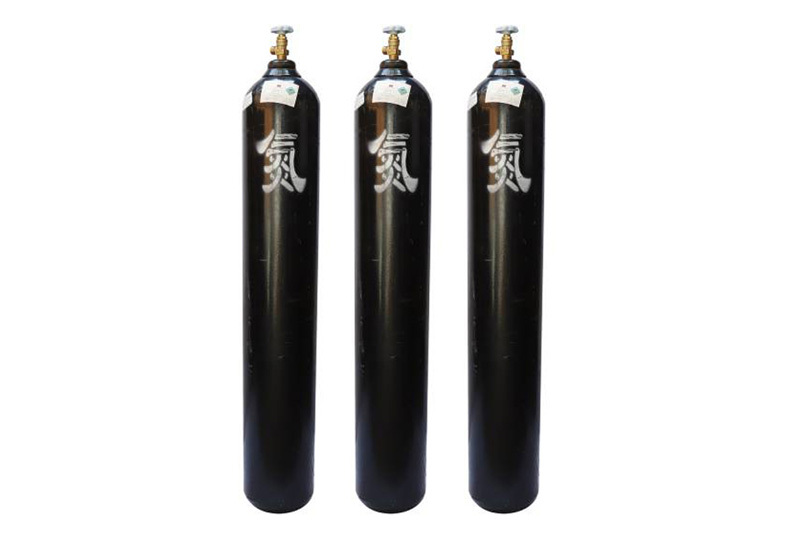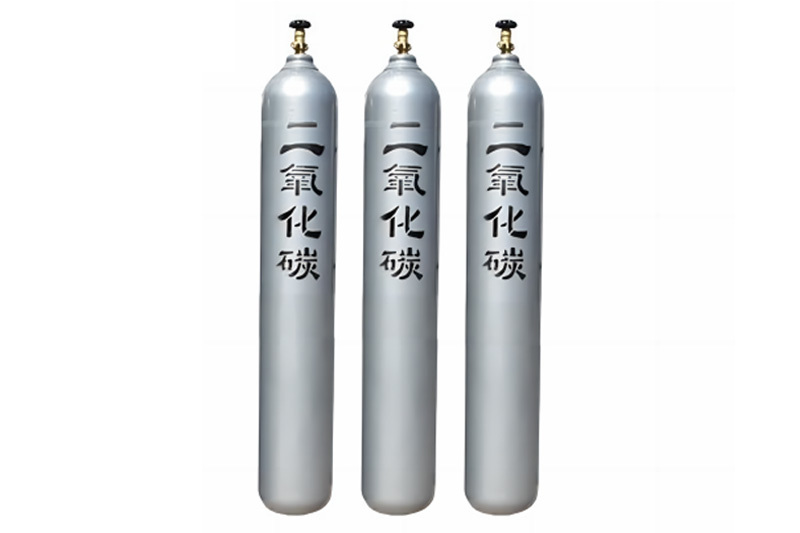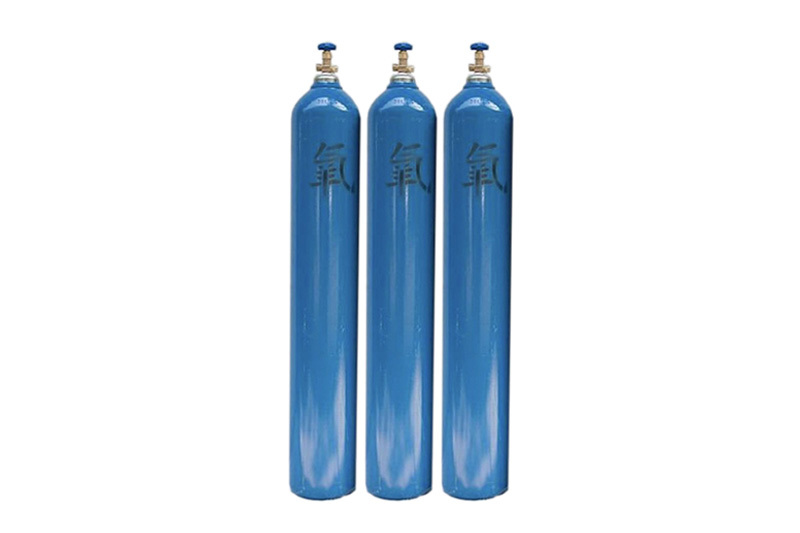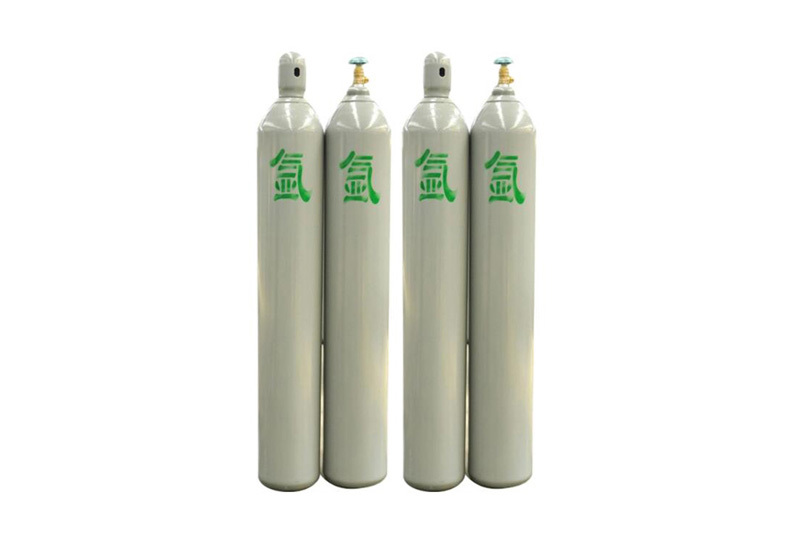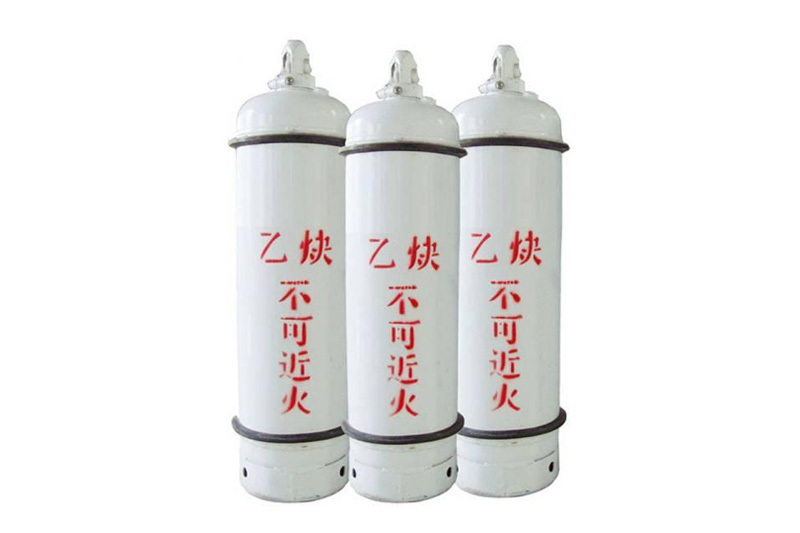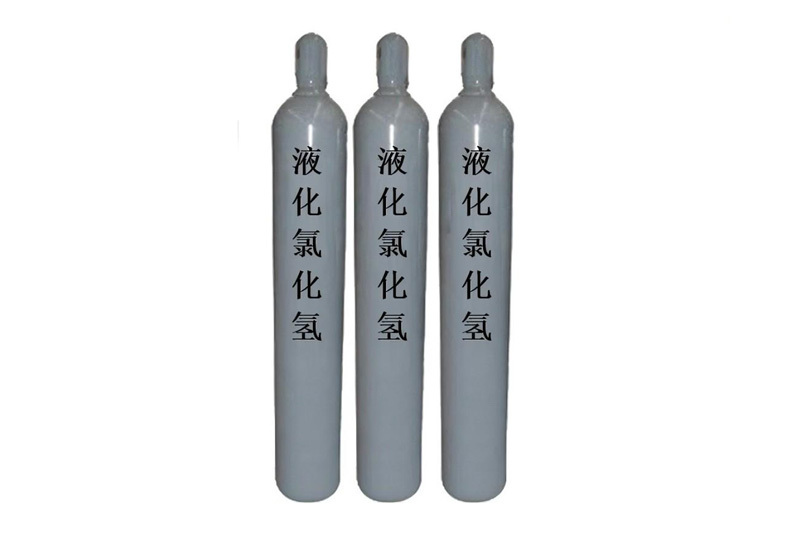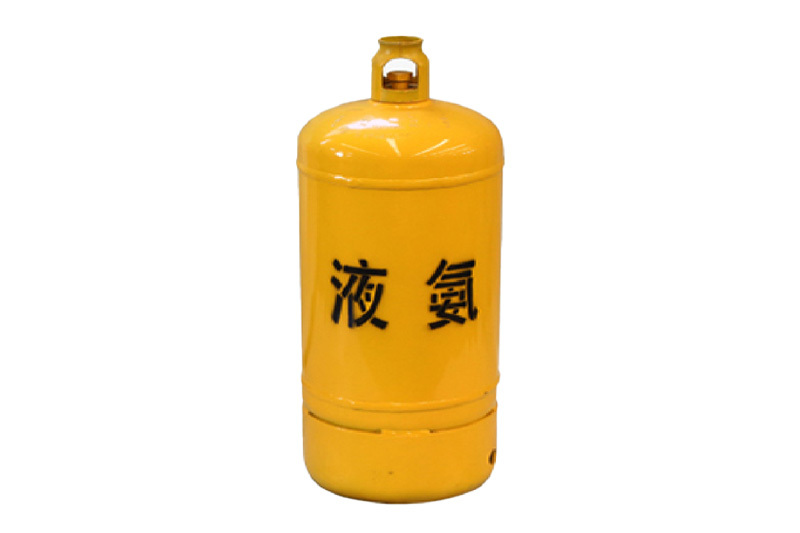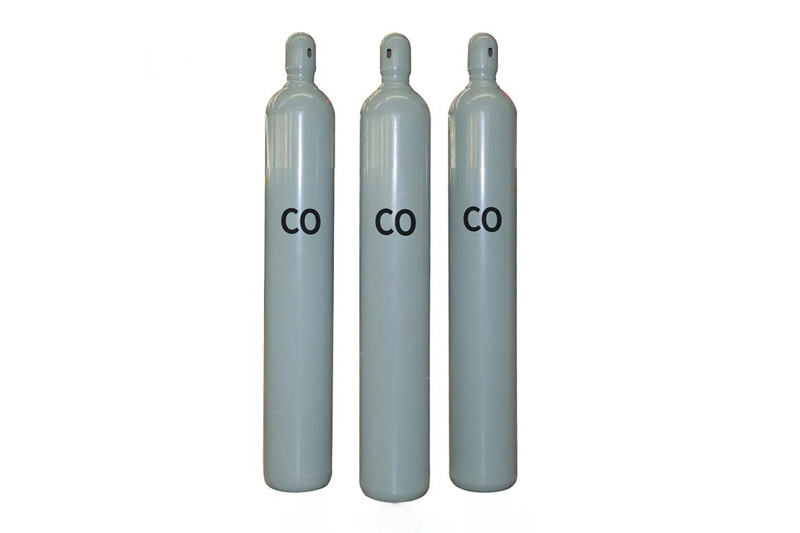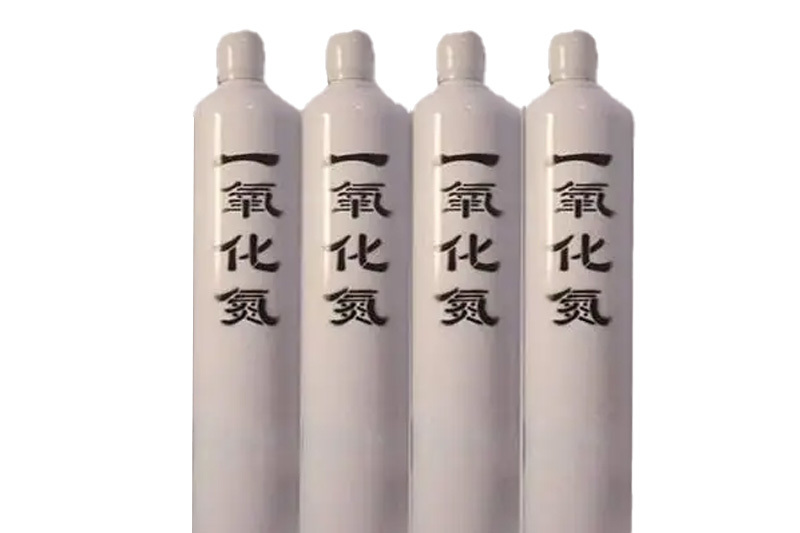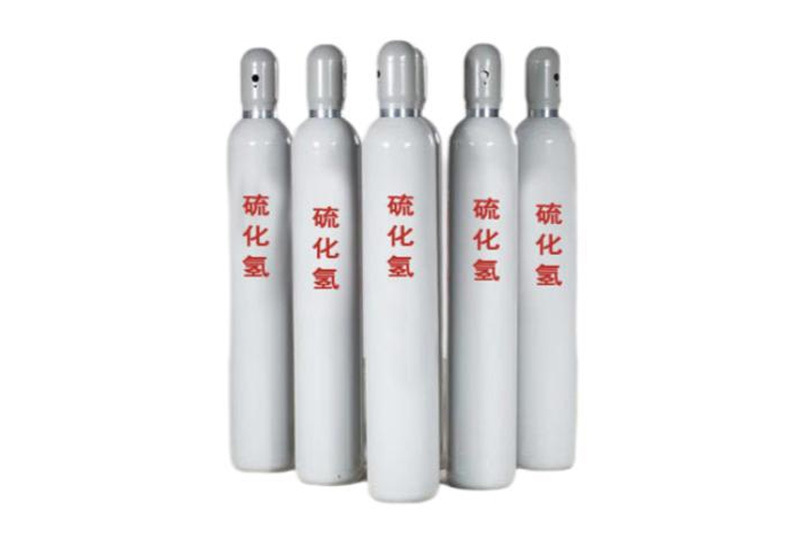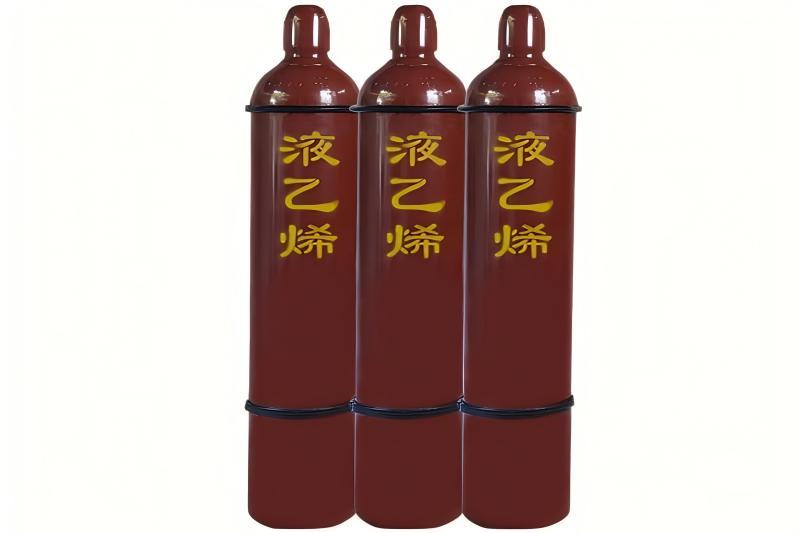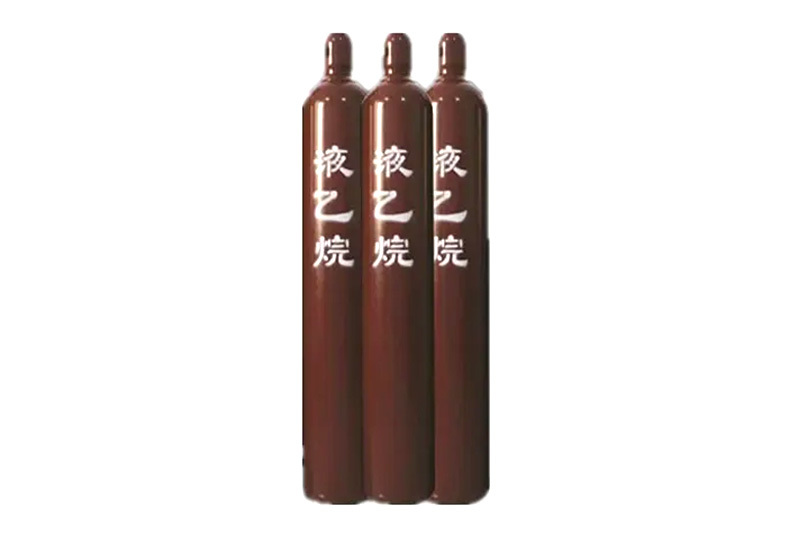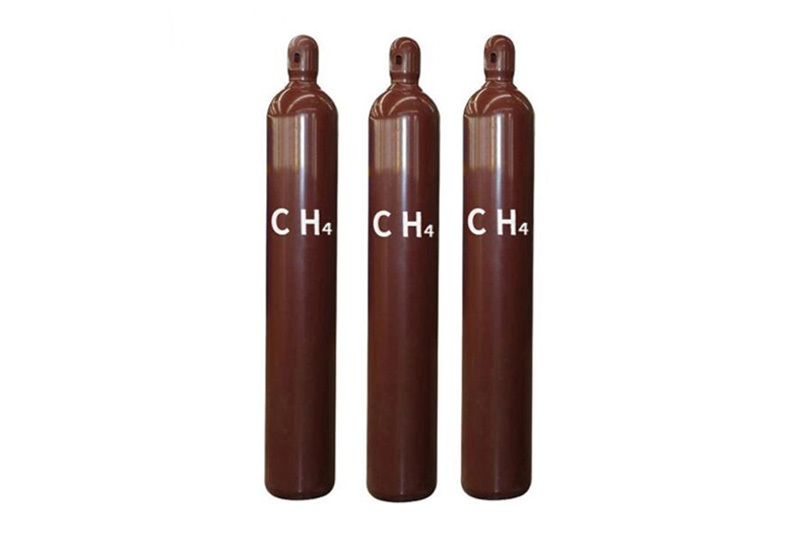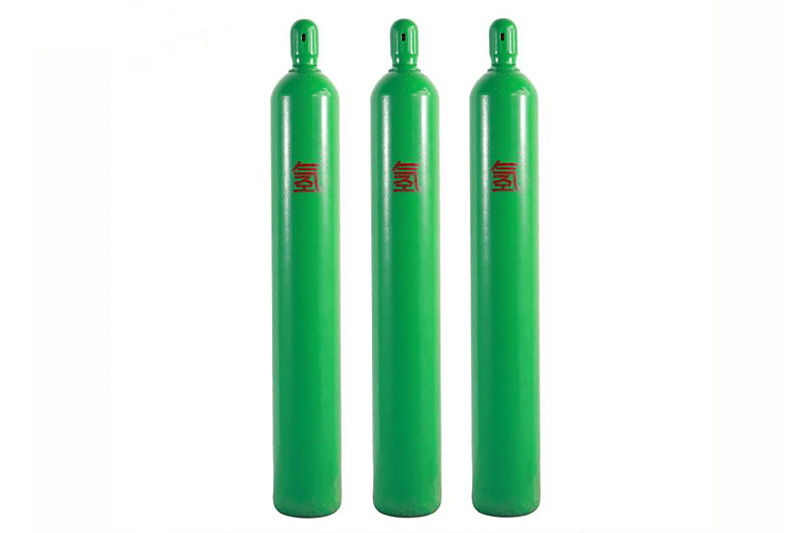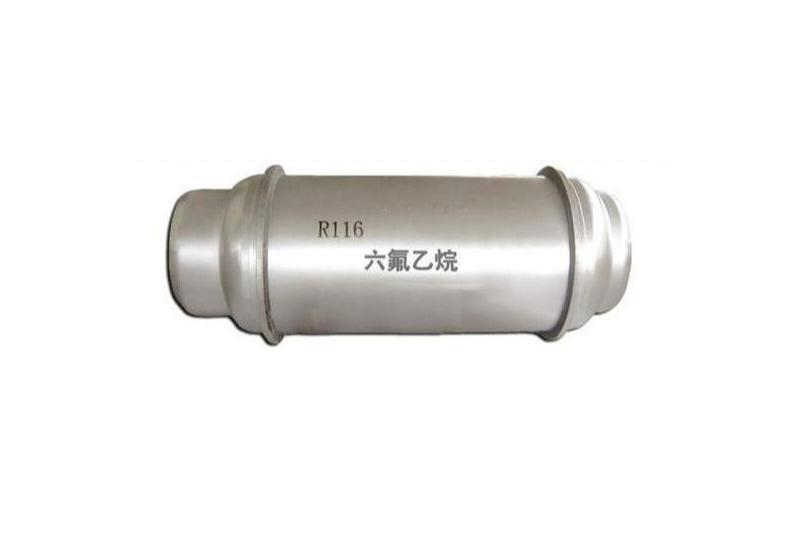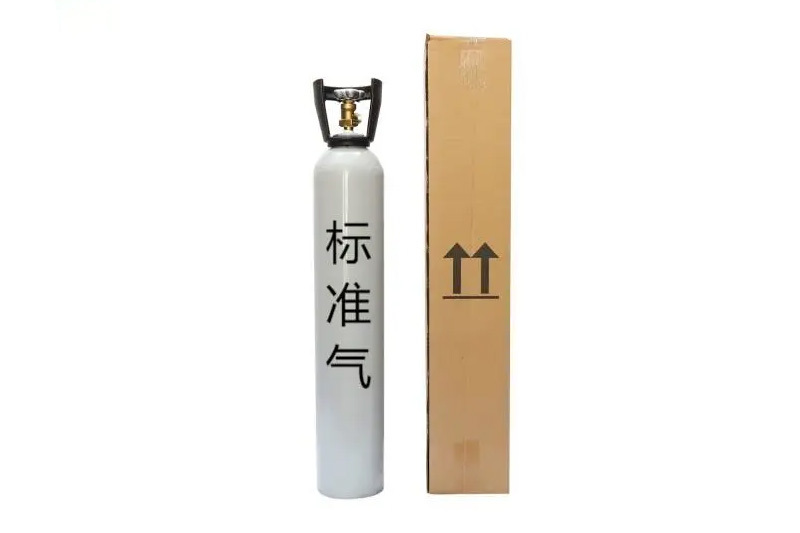Nitrogen (N₂) is one of the main components of air, accounting for approximately 78% of the total Earth's atmosphere. It is a colorless, odorless, and tasteless inert gas with stable chemical properties that is not easily reactive with other substances. In industrial production, nitrogen is often used as a protective gas, such as in welding, cutting, and food packaging processes, to prevent oxidation and corrosion caused by oxygen. In addition, nitrogen is also used in the manufacture of fertilizers, synthetic fibers, and as a refrigerant for freezing and refrigeration. Due to its inertness, nitrogen is also commonly used as an inert atmosphere in laboratories to protect sensitive substances from the influence of air.
Carbon dioxide (CO₂) is a colorless and odorless gas that is an important component of the Earth's atmosphere and a key substance in many industrial processes and biological activities. In nature, carbon dioxide is absorbed by plants through photosynthesis and converted into oxygen, while also being released during respiration and combustion processes. As one of the greenhouse gases, carbon dioxide has a significant impact on the Earth's climate system, and excessive emissions can lead to global warming. In industry, carbon dioxide is commonly used in the production of carbonated beverages, frozen foods, and as a protective gas in welding and firefighting.
Oxygen (O₂) is an important component of the Earth's atmosphere, accounting for approximately 21% of the air volume and being the most abundant element. Oxygen is required for the oxidation of hydrocarbons, treatment of wastewater, rocket propellants, and for respiration of animals and humans in aviation, aerospace, and diving. Animal respiration, combustion, and all oxidation processes (including the decay of organic compounds) consume oxygen. But oxygen in the air can be continuously replenished through the photosynthesis of plants. In the cutting and welding of metals. It is a mixture of oxygen with a purity of 93.5%~99.2% and combustible gas (such as acetylene) to produce a flame at extremely high temperatures, thereby melting the metal. The metallurgical process cannot do without oxygen. Oxygen is also required to enhance the production process of nitric acid and sulfuric acid. By blowing a mixture of oxygen and water vapor into a gasifier without using air, high calorific value gas can be obtained. Medical gas is extremely important.
Argon (Ar) is a colorless, odorless, and non-toxic inert gas with a relative atomic mass of 39.948. It is one of the components of air and is mainly produced through air liquefaction and distillation. Argon gas has stable chemical properties and is not easily reactive with other substances, so it has a wide range of applications in industry, such as being used as a welding shielding gas, bulb inflation, low-temperature freezing, photolithography process in semiconductor manufacturing, and inert atmosphere in scientific research experiments. In addition, argon gas has a density 1.4 times that of air at room temperature and is slightly soluble in water.
Acetylene (C₂H₂) is an organic compound commonly known as coal or carbide gas. It is the smallest volume of alkyne compounds and is a colorless gas at room temperature and pressure. It is slightly soluble in water, soluble in ethanol, acetone, chloroform, benzene, and miscible in ether. It is an important raw material for organic synthesis and a monomer for synthesizing rubber, synthetic fibers, and plastics. It can also be used for oxyacetylene welding and cutting.
Hydrogen chloride (HCl), with a molecular weight of 36.461, is a colorless, irritating, corrosive, and suffocating gas that strongly emits smoke in humid air. A hydrogen chloride molecule is composed of one chlorine atom and one hydrogen atom. Hydrogen chloride is easily soluble in water and alcohol, as well as in ether. Its aqueous solution is called hydrochloric acid, also known as hydrochloric acid. Under standard conditions (0 ° C, 101.325 kPa), one volume of water can dissolve approximately 500 volumes of hydrogen chloride.
Ammonia (NH3) is a colorless liquid with a strong pungent odor. Ammonia, as an important chemical raw material, is usually obtained in liquid form by pressurizing or cooling gaseous ammonia gas for convenient transportation and storage. Liquid ammonia is easily soluble in water, forming ammonium ions NH4+and hydroxide ions OH - after dissolving in water, and the solution is alkaline. Liquid ammonia is mostly stored in pressure resistant steel cylinders or tanks and cannot coexist with substances such as acetaldehyde, acrolein, boron, etc. Liquid ammonia is widely used in industry, with corrosiveness and easy volatilization, resulting in a high incidence of chemical accidents.
Carbon monoxide (CO), a carbon oxide compound with a molecular weight of 28.0101, is typically a colorless, odorless, and tasteless gas. In terms of physical properties, carbon monoxide has a melting point of -205 ℃ and a boiling point of -191.5 ℃. It is difficult to dissolve in water and has a solubility of 0.002838g in water at 20 ℃. It is not easily liquefied or solidified. In terms of chemical properties, carbon monoxide has both reducing and oxidizing properties, and can undergo oxidation reactions (combustion reactions), dismutation reactions, etc; Simultaneously toxic, at high concentrations, it can cause varying degrees of poisoning symptoms in humans, endangering the brain, heart, liver, kidneys, lungs, and other tissues of the human body, and even leading to electrocution like death. The lowest lethal concentration for human inhalation is 5000ppm (5 minutes). In industry, carbon monoxide is the basis of one carbon chemistry and can be produced by methods such as coke oxygen method. It is mainly used for the production of methanol, phosgene, and organic synthesis.
Nitric oxide (NO), an inorganic compound, is a nitrogen oxide compound with a valence of+2 for nitrogen. At room temperature and pressure, it is a colorless gas, slightly soluble in water, and soluble in ethanol and carbon disulfide.
Hydrogen sulfide (H₂S) is a colorless and highly toxic acidic gas, belonging to inorganic compounds. It has no obvious odor at high concentrations, strong rotten egg odor at low concentrations, and sulfur odor at extremely low concentrations. It is a byproduct of many industrial processes, such as natural gas extraction, petroleum refining, wastewater treatment, and paper industry. It is also produced in nature through the decomposition of organic matter and the metabolic activities of certain microorganisms. Hydrogen sulfide has a slightly higher density than air and can accumulate in low-lying areas, forming potential hazardous zones. At low concentrations, it is toxic to the human body, and inhaling high concentrations of hydrogen sulfide can quickly be fatal. It inhibits cellular oxidative phosphorylation, hinders cellular respiration, and leads to cell death. Hydrogen sulfide is irritating to the eyes, respiratory system, and nervous system, and exposure to low concentrations may cause eye irritation, headache, cough, and difficulty breathing.
High ethylene (C₂H₄), with a molecular weight of 28.054, is an organic compound composed of two carbon atoms and four hydrogen atoms. Two carbon atoms are connected by a carbon carbon double bond. Ethylene exists in certain tissues and organs of plants and is converted from methionine under conditions of sufficient oxygen supply.
Ethane (CH₃CH₃) is an organic compound that is a colorless, odorless gas that is insoluble in water. It is the second member of the alkane series and the simplest hydrocarbon containing a carbon carbon single bond. Ethane content in some natural gases is 5% to 10%, second only to methane; And it exists in a dissolved state in petroleum. Ethane is often used as outdoor fuel and refrigerant.
Methane (CH₄) is a non-polar molecule with a tetrahedral structure and is the simplest organic compound. Methane, as the main component of conventional natural gas, shale gas, combustible ice, etc., is a very important carbon based resource. It is a major non CO2 greenhouse gas, and in the stratosphere, methane is broken down into water vapor (clouds), leading to the destruction of the ozone layer.
Argon (Ar) is a colorless, odorless, and non-toxic inert gas with a relative atomic mass of 39.948. It is one of the components of air and is mainly produced through air liquefaction and distillation. Argon gas has stable chemical properties and is not easily reactive with other substances, so it has a wide range of applications in industry, such as being used as a welding shielding gas, bulb inflation, low-temperature freezing, photolithography process in semiconductor manufacturing, and inert atmosphere in scientific research experiments. In addition, argon gas has a density 1.4 times that of air at room temperature and is slightly soluble in water.
Hydrogen (H₂) is a simple substance formed from the element hydrogen, with a molecular weight of 2.01588. Hydrogen gas at room temperature and pressure is a colorless, odorless, highly flammable, and insoluble gas in water. The density of hydrogen is 0.089g/L (101.325kpa, 0°C), which is only 1/14 of that of air, making it the least dense gas known in the world. So hydrogen can be used as a filling gas for airships and hydrogen balloons (due to its flammability and low safety, helium is often used to fill airships). Hydrogen reacts with non metals with high electronegativity to exhibit reducibility, and reacts with active metals to exhibit oxidizability.
Nitrogen (N₂) is one of the main components of air, accounting for approximately 78% of the total Earth's atmosphere. It is a colorless, odorless, and tasteless inert gas with stable chemical properties that is not easily reactive with other substances. In industrial production, nitrogen is often used as a protective gas, such as in welding, cutting, and food packaging processes, to prevent oxidation and corrosion caused by oxygen. In addition, nitrogen is also used in the manufacture of fertilizers, synthetic fibers, and as a refrigerant for freezing and refrigeration. Due to its inertness, nitrogen is also commonly used as an inert atmosphere in laboratories to protect sensitive substances from the influence of air.
Hexafluoroethane (C₂F₆), also known as perfluoroethane, is a colorless and odorless gas. It is widely used in the electronics industry and refrigeration applications. In microelectronics manufacturing, it serves as a critical gas for plasma etching, meeting the high-precision requirements of ultra-large-scale integrated circuit (ULSI) production. Additionally, hexafluoroethane is employed as an eco-friendly refrigerant due to its low toxicity, non-flammability, and atmospheric stability, making it ideal for applications requiring precise temperature control. These diverse applications highlight hexafluoroethane’s unique chemical properties and broad industrial value, cementing its role as an indispensable material in modern technology and manufacturing
Petrochemical standard gas refers to precisely formulated and certified reference gases used in petrochemical production, testing, and instrument calibration to ensure process safety and data accuracy. These gases contain critical components such as methane, propane, hydrogen sulfide, and carbon monoxide, simulating real-world gas environments under operational conditions. They are applied in refining catalytic cracking, pipeline leak detection, tail gas emission monitoring, and other critical processes. The gas purity must reach the parts per million (ppm) level and comply with international certifications such as ISO 6142 to guarantee concentration traceability. Additionally, these gases must exhibit long-term stability to prevent compositional changes during transportation and storage, while also adapting to calibration requirements under extreme conditions like high temperatures and high pressures. With the intelligent transformation of the petrochemical industry, standard gases are evolving toward multi-component dynamic simulation, rapid-response online analysis, and low-carbon monitoring technologies, providing core support for safe production and environmental compliance.


